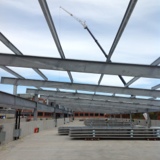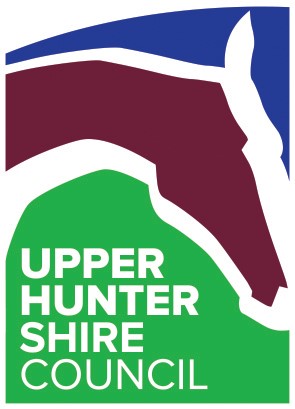Information
-
Document No.
-
Audit Title
-
Client / Site
-
Conducted on
-
Prepared by
-
Location
-
Personnel
Contractor Information
-
Contractor Company<br><br>Contractor Site Manager<br><br>Contact Information <br><br> Phone Number<br> Cell Phone
-
Subcontractors<br><br>Sub 1 Company Name<br>Sub 1 Site Manager<br>Sub 2 Company Name<br>Sub 2 Site Manager
Section 1 Administrative
-
1.1 Safety Manual, SDS's, OSHA Poster on site and available for review?
-
1.2 Is the Sub-contractor Site Safety Manual, MSDS's Available?
-
1.3 Have Competent Persons been Designated by the Contractor and Sub-Contractor, are these persons on site and available?
-
1.4 Have "Tool Box Talks" or "Tailgate" Safety Meetings been conducted on site?
-
Enter date and Time of last meeting
-
1.5 Have all Applicable Permits been pulled and are they available?<br>(Note This information may be in the Project File Located on the Share File)
-
1.5.1 One Call or Dig Safe?
-
1.5.1.1 Utility Markouts completed and locations identified?
-
1.5.2 Storm Water Pollution Prevention Plan (SWPPP)
-
1.5.3 Other
-
1.6 Has a Pre-Construction Site Hazard Assessment been completed?
-
1.6.1 Has the Contractor Reviewed (XXXX) of the EPC Contract? <br>(Check the Contract Folder located in the Project Folder on the Share File to verify signature pages)
-
enter date from contract signature page
Section 2 Site Security & Public Protection
-
2.1 Is there adequate lighting as needed to prevent injury or property damage to the general public?
-
Add media
-
2.2 Have perimeter fencing and barricades been erected where the general public or unauthorized persons can potentially access the work area?
-
Add media
-
2.3 Is a Contractor representative on site during normal business hours and is a contact available for off hour emergencies?
-
2.5 Are areas below the work zone protected from falling objects that may impact workers, pedestrians, sidewalks, driveways cars or other personal property?
-
Add media
-
2.6 Has the contractor installed signage warning the general public and workers of the potential hazards associated with the work site? (i.e. warning construction zone, hard hats required, no trespassing etc?)
-
Add media
-
2..7 Is there a traffic control plan to warn approaching motorists, delivery drivers and pedestrians of work being performed in the area, and to protect workers from potentially being struck by vehicles?
-
Add media
Section 3 Personal Protective Equipment
-
3.1 Are hard hats worn by all personnel in the work zone, worn properly with the brim facing forward?
-
Add media
-
3.2 Are workers in areas with excessive noise, wearing appropriate hearing protection, (>85db single, >100db double)?<br>(note rule of thumb, if necessary to raise voice above normal speaking voice, hearing protection is likely required)
-
Add media
-
3.3 Are all personnel (workers and visitors) wearing eye protection that meets the ANSI Z87.1 Standard?
-
Add media
-
3.4 Are workers who may potentially be subjected to injury from flying particles wearing an approved face shield? (Note tasks such as grinding, chipping, torch cutting, or demo saw equipped with an abrasive wheel would require a full face shield)
-
Add media
-
3.5 Are all personnel (workers and visitors) on site wearing appropriate foot wear? (no sneakers, open toed shoes, sandals) Work boots with safety toe required for workers.
-
Add media
-
3.6 Are all workers wearing clothing appropriate for a construction site? (long pants, shirts with sleeves)
-
Add media
-
3.7 Are workers wearing high visibility traffic vests with reflective striping?
-
Add media
-
3.8 Are workers wearing hand protection appropriate for the task being performed?
-
3.8.1 are level II cut resistant gloves being used for handling sheet metal and PV panels, using utility knives or tools that can cause cuts or to the hands?
-
3.8.2 Are workers wearing leather general purpose gloves when handling ballast block or other material that can abrade the hands?
-
3.8.3 Are workers wearing chemical resistant gloves when handling solvents, cleaners degreasers, or adhesives?
-
Add media
-
3.9 Are respirators being used where applicable?
-
Add media
-
3.10 Are visitors provided with PPE as necessary?
-
Add media
Section 4 Fall Protection
-
4.1 Are Barricades, Guardrails, or warning lines provided to protect workers from falls from heights of 6' or greater on projects with parapets <42" in height, around skylights or open hatches?
-
4.1.1 Are warning lines set back a minimum of 15' for low sloped roofs from the edge of the roof and is a monitor in place to alert workers who may potentially cross over the warning line?
-
Add media
-
4.1.2 Are skylights covered or protected with guardrails to prevent workers from falling through to lower levels?
-
Add media
-
4.1.3 When loading a roof with tele-handler forklifts, are workers directing the load protected from falls by the use of a guard rail system or counterweight with full body harness and lanyard?
-
Add media
-
4.2 Where temporary counterweight anchors are used, are they used as limiting devices only to prevent workers from approaching an unprotected edge to a maximum of 1.5' (0.46m) from the edge of the roof?
-
Add media
-
4.3 Are workers qualified through training and application of the proper way to wear a Personal Fall Arrest System?
-
Add media
-
4.3.1 Are workers wearing PFAS's properly? (minimal slack in the harness, D ring in middle of the back etc)?
-
Add media
-
4.3.2 Are PFAS inspections current and up to date?
-
4.4 When utilized, 6is 100% fall protection used when there is a potential to fall from a height of 6' or greater?
-
Add media
-
4.5 When working from an articulating boom manlift are workers 100% tied off?
-
Add media
-
4.6 When working from a scissors lift are workers instructed to NOT work outside of or above the guardrail?
-
Add media
-
If conditions warrant workers to work above or outside of the guardrail are they wearing a harness with a lanyard, and are they tied off to suitable anchor points?
-
Provide documentation from the Contractor authorizing the worker to perform work outside or above the guardrail.
-
4.7 Are rebar caps used to protect workers against the potential of becoming impaled on exposed rebar, ground rods, lightning rods, re-enforcing stakes or other objects?
-
Add media
Section 5 Excavations
-
5.1 Is access and egress provided every 25' (7.6m) of linear travel in trenches 4' (1.2m) or greater in depth?
-
Add media
-
5.2 Are ladders used for egress and ingress extending a minimum of 3' (0.92m) above the top of the trench?
-
Add media
-
5.3 Are spoils piles at least 2' (0.62m) from the edge of the excavation and walkway along excavation is free of trip hazards?
-
Add media
-
5.4 Has the area to be excavated been marked out, utilities identified and is the area clear of known utilities?
-
Date and Expiration date of Dig Safe Permit
-
Add media
-
5.4.1 Are soft dig techniques being used when the excavation is within 5' (2.1m) of a utility markout?
-
Add media
-
5.5 Is a designated competent person (competent in excavations) on site?
-
5.5.1 Is there a documented daily inspection completed by the competent person available for review?
-
Date and time of last inspection
-
5.6 Are excavations free from seeping or standing water, spaulding and cracking around the walls and edges of the excavation?
-
Add media
-
5.7 Are trenches and excavations 5'or greater (1.2m) in depth sloped or shored as necessary to prevent the potential for cave in?
-
Add media
-
5.8 Are workers protected from equipment that may potentially cause a cave in? (sloping, shoring, trench boxes)
-
Add media
-
5.9 Are trenches and excavations perimeters protected by barricades, fencing or back fill to protect workers from falling into them and to prevent pedestrians and unauthorized persons or vehicles from falling or diving into them?
-
Add media
-
5.10 Are workers clear of equipment swing radius, (swing radius from pivot pin to end of fully extended arm & bucket +5') and blind spots?
-
Add media
-
5.11 Are workers protected from falling into trenches or excavation 6' (1.8m) or greater in depth by guardrails or gangways equipped with standard guardrails systems?
-
Add media
Section 6 Cranes and Lifting Equipment
-
6.1 Does the Crane Operator hold a valid Operators Certificate from the NCCCO or other Crane Certifying organization?
-
Enter expiration date on Operators License (NOT DRIVERS LICENSE)
-
6.2 Are load charts posted in the cab of the crane?
-
6.3 Is a copy of the most recent inspections available for review?
-
6.3.1 Daily Pre-start inspection
-
Enter date of inspection
-
Previous Months Inspection
-
Enter date of most recent inspection
-
6.4 If applicable; has a road closure permit been obtained, and is a copy on site?
-
Enter Expiration Date
-
6.5 Has the lift area (swing radius of the crane including boom) been secured?
-
Add media
-
6.5.1 Are unauthorized persons, workers pedestrians kept away from from the lift area?
-
Add media
-
6.6 Is there a qualified Rigger on site ensuring loads are properly rigged and secured for each pick?
-
Enter date of certification and expiration date
-
Enter Name of the Rigger and Company
-
6.7 Have all lifting equipment, straps chains hooks etc, been inspected prior to the start of the days activity and is the inspection on site for review?
-
Enter date of equipment inspection
-
6.8 Is the signalman qualified?
-
6.8.1 Is the documentation of Signalers qualification on site per 29 CFR 1926.1428(a)(3)
-
Enter date on qualification signature page (must be from crane company currently employed by)
-
6.9 Is the signalman protected from falls by a parapet at least 42' (1.07m) high, a standard guardrail, or a PFAS?
-
Add media
-
6.10 Has a Pick Plan been developed for loading the roof and is it available for review?
-
Enter Date plan was developed
Section 7 Powered Industrial Trucks (forklifts, including telehandler and rough terrain models).
-
7.1 Does the operator(s) hold a current valid license to operate the equipment?
-
Date of training
-
7.2 Has the operator performed the daily or pre-shift inspection of the forklift, is it available on site for review?
-
Enter Date and Time of most recent Inspection
-
7.3 Is a Qualified Rigger preparing lifts, is a sky hook or jib boom being used? (under fork lifting is prohibited)
-
7.4 Are Load Charts posted on the equipment
-
7.5 Is the Lift Area properly barricaded, and are unauthorized workers, pedestrians and vehicle traffic kept out of the area?
-
7.6 Have lifting straps, slings, chains and hooks been inspected by a Qualified Person prior to the lift and is the inspection documented and on site for review?
-
Enter Date and Time of most recent inspection
-
7.7 Is the signalman protected from falling from heights 6' (1.8m) by a parapet no lower than 42" (1.07m), a guardrail or PFAS?
-
7.8 Do all lights, brakes, horns backup alarms, and strobe lights working properly?
-
7.9 If equipped, is the Operator wearing the seat belt?
Section 8 Tools and Equipment
-
8.1 Electrical Tools are maintained in a safe working condition, casing intact, cords in good condition factory molded plugs attached?
-
8.2 Hand tools are in good condition, handles not taped or cracked, heads are tight, etc?
-
8.3 Proper tools being used for the task?
-
8.4 Pneumatic tools being used?
-
8.4.1 Hoses are in good condition, no splices, no worm clamps being used?
-
8.4.2 Whip Checks used?
-
8.4.3 Air pressure set for the working PSI of the tool?
-
8.5 Are guards in place and operational?
-
8.6 Are operators qualified to operate power tools?
-
8.7 Are warning labels intact and legible on power tools?
Section 9 Fire Protection
-
9.1 Are Flammable Liquids, Stored and Labeled Properly?
-
9.2 Are Fire Extinguishers rated 2A readily available, accessible, and inspected?
-
9.3 Are Emergency vehicles provided with access (fire lanes are clear and unobstructed)?
-
9.4 Flammable liquids storage areas have adequate signage, (Warning Flammable Liquids, No Smoking etc)?
-
9.5 For work requiring the use of torches, welders or grinding is a permit in place to ensure adequate measures are in place to prevent or minimize the potential for fires? (NO HOT WORK PERFORMED ON CLIENT ROOFS)
Section 10 Electrical
-
10.1 Electrical Cords are in safe condition, no splices, or taped used, Ground Prong is in place, Cords are equipped with Factory molded ends?
-
10.2 Cords are protected from traffic by covers rubber bumpers or other means?
-
10.3 Cords are routed to prevent workers from tripping or from getting caught?
-
10.4 Ground Fault Circuit Interrupters (GFCI's) are being used (includes Portable Generators in excess of 5KW)? NOTE on boar CB's on portable generators do not count as GFCI)
-
10.5 Extension cords are rated for Hard or Extra Hard use? (look for marking on cord, type S, SO, ST, or STO, SJ,SJO, SJTO)
-
10.6 Temporary power boxes and energized parts protected?
-
10.7 Are Lock Out Tag ut procedures used and followed, are permits completed and available?
-
10.8 Are electrical rooms protected from unauthorized entry?
-
10.9 Are workers wearing PPE appropriate to the electrical hazards, (gloves, tools, matts, FR clothing etc)?
-
10.10 Are warning signs posted warning workers of potential of electrical hazards, (High Voltage etc)?
Section 11 Medical Emergencies
-
11.1 Is an Emergency Action Plan on site and have workers reviewed and understand it?
-
11.2 Does the EAP contain phone numbers workers can call to summon emergency medical help, fire or police depts.?
-
11.3 Does the EAP have an evacuation map, showing routes workers should take and where to assemble?
-
11.4 is there a last 1 worker trained in First Aid and CPR on site?
-
11.5 Does the EAP have a map or direction workers can follow to drive to a medical facility?
Section 12 Housekeeping
-
12.1 Are scrap materials, discarded or removed from the job site daily?
-
12.2 Are protruding nails, staples or other fasteners removed from scrap lumber, skid boards or boxes that can cause injury to workers?
-
12.3 Are work areas clean and kept free of excess trash materials or debris that workers can trip on or over?
-
12.4 Are walking working surfaces free of obstructions?
Section 13. Ladders/Stairs/Stair Towers
-
13.1 Are ladders being used properly?
-
13.2 Are ladders inspected daily before use?
-
13.2.1 Are defective or damaged ladders removed from service and tagged DO NOT USE?
-
13.3 Are areas around the top and bottom of ladders free of debris, trash or other material that can cause a worker to fall trip or otherwise become injured?
-
13.4 Are straight ladders (extension ladders) set at a 4:1 Pitch and does the ladders extend at least 3' (0.92m) above the edge of the landing?
-
13.5 Is a landing or stairs used to access landings whenever there is a break in elevation of 19" (0.48m) or greater? (Include expansion joints, parapets etc)
-
13.6 Where Stair Towers are used are they secured to the building every 20' (6.15,)?
-
13.7 Are Stair towers inspected daily by a designated competent person?
-
Enter date and time of last Inspection.
-
Are stairs free of debris trash or materials that can cause a worker to tip or fall?
-
Are stairs with 4 or more risers equipped with hand rails along any unprotected side?
Section 14. Scissors Lifts/Articulating Boom Lifts
-
14.1 Is the gate or chain secured whenever workers are riding or working from a Lift?
-
14.1.1 Are workers provide with and are they wearing a harness and lanyard when WORKING from a scissors lift?
-
14.1.2 Workers are not using ladders, stools buckets or other means to increase height while working from a scissors lift?
-
14.2 Scissors lifts and articulating boom lifts are being operated on a flat level surface free of holes, and away from trenches?
-
14.3 Lifts are operated with the manufacturers specifications for loading (See load chart)?
-
14.4 Lifts are operated a safe distance (Min 10' (3.07m) from power lines or other electrical hazard?
-
14.5 Lifts are operated away from grates, shaft covers or other openings that may collapse under the weight of the lift?
Section 15 Power operated equipment
-
15.1 Are moving parts guarded, (flywheels, rotating shafts etc?)
-
15.2 Are fuel and oil systems free of leaks?
-
15.3 Are hydraulic oil lines n good condition, free of leaks and not spliced or "patched"?
-
15.4 Is cutting oil captured and discarded appropriately?
-
15.4.1 Are spills and drips cleaned up appropriately? (may cause workers to slip and damaged roof liner)
Comments:
Signatures
-
Inspector Signature
-
Select date
-
Contractor Representative Signature
-
Select date
-
Empower Energies Project Manager Signature
-
Select date













